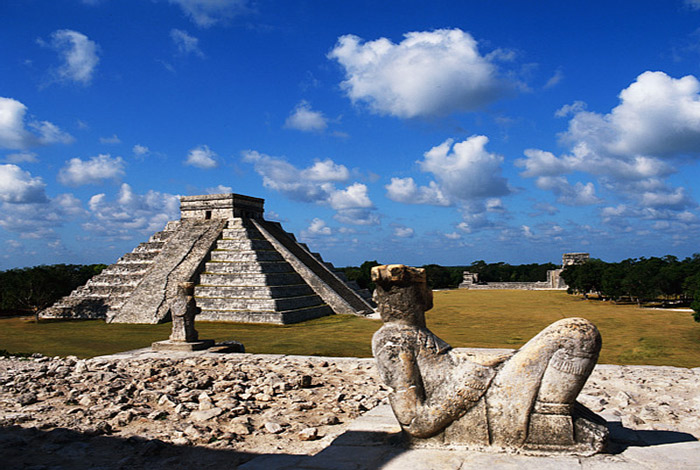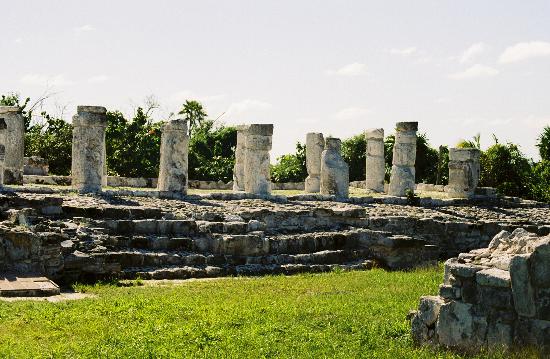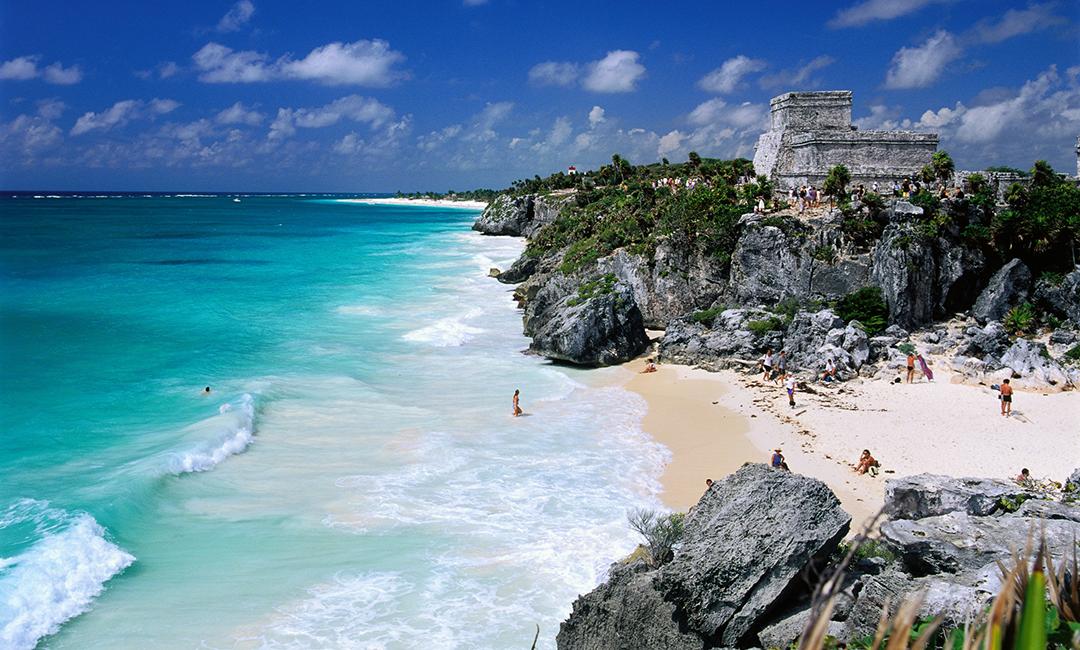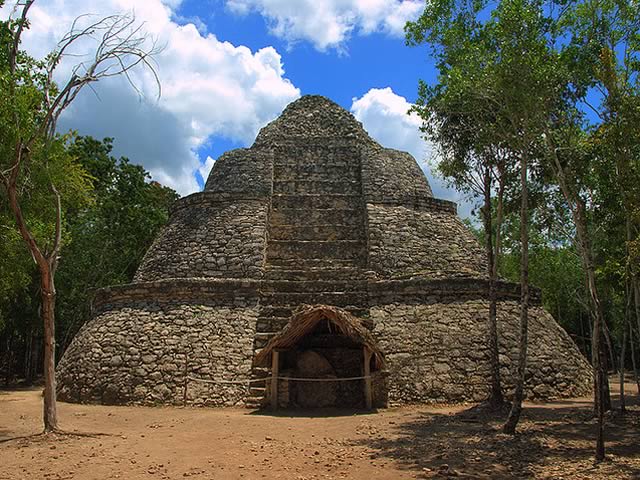Without a doubt, this corner of Mexico has some of the most beautiful stretches of coastline you’ll ever see. The coral-crushed white sands and turquoise-blue waters of the Mexican Caribbean promise travellers an idyllic vacation. Add the perfect finishing touch to your vacation by staying in one Royal Holiday’s hotels: Park Royal Cancún, Grand Park Royal Cancún Caribe, Park Royal Cozumel and Grand Riviera Princess; each offering top of the line services, modern facilities and leisurely amenities for a heavenly vacation stay.
Whatever activity you choose, forget not to explore the mind-blowing Maya archaeological sites, conformed by pyramids, temples and ball courts of one of the most brilliant pre-Hispanic civilizations of all time.
The Archaeological Zone El Rey, on the west side of Cancun’s Blvd Kukulcán between Km 17 and Km 18 is a small temple and several ceremonial platforms. The site gets its name from a sculpture excavated here of a dignitary, possibly king wearing an elaborate headdress.
Right by the jade-green Caribbean waters, 130 Kms from Cancún, is a dramatically situated Pre-Columbian Maya walled city called Tulúm, excellent for diving, snorkeling, sun bathing and exploring archaeological ruins. Its three major structures – El Castillo, the Temple of the Frescoes, and the Temple of the Descending God – will leave you speechless.
Spend an unforgettable day discovering the greatness of the Mayan culture and admiring the spectacular scenery in Cobá, set deep in the jungle; walk down stone-paved avenues, climb up vine-covered mounds, and ascend to the top of Nohoch Mul pyramid (42m height), the second-tallest Maya structure of the Yucatán Peninsula.
Easily the best known and well restored of Yucatán Maya archaeological sites, Chichén Itzá is a UNESCO World Heritage Site and was named one of the “New Seven Wonders of the World”. Its impressive sights are the Juego de Pelota (Ball Court) and El Castillo (Pyramid of Kukulkán), a massive 25m stone representation of the Maya calendar. Each year during the spring and autumn equinoxes the sun produces the illusion of a serpent ascending or descending the steps of the Kukulkán Pyramid. The illusion is reproduced at the sound and light show that takes place nightly at the archaeological site.
The structure is actually a massive Maya calendar formed in stone. Each of El Castillo’s nine levels is divided in two by a staircase, making 18 separate terraces that commemorate the 18 20-day months of the Maya Vague Year. The four stairways have 91 steps each; add the top platform and the total are 365, the number of days in the year. On each facade of the pyramid are 52 flat panels, which are reminders of the 52 years in the Maya calendar round.





